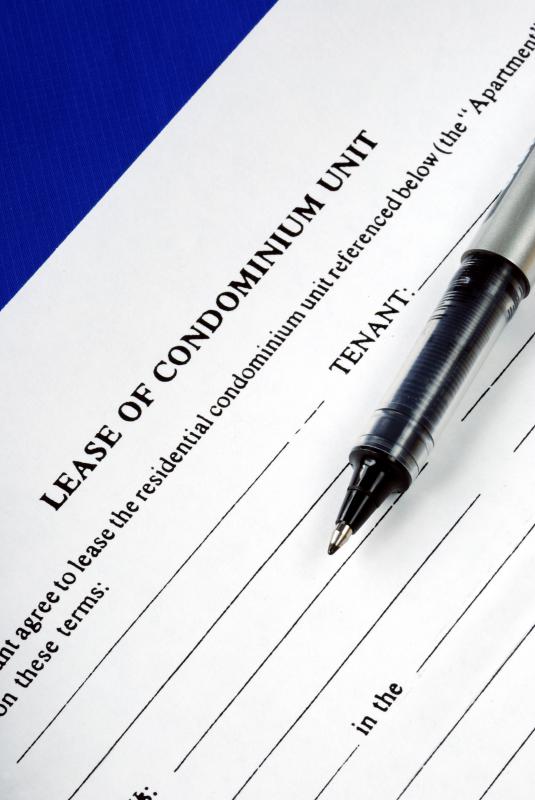At WiseGEEK, we're committed to delivering accurate, trustworthy information. Our expert-authored content is rigorously fact-checked and sourced from credible authorities. Discover how we uphold the highest standards in providing you with reliable knowledge.
How do I Write Residential Lease Agreements?
A residential lease agreement is commonly used when a property owner wishes to rent a house or apartment to someone. As long as the terms conform to any specific laws in the jurisdiction relating to rentals, then residential lease agreements may include any terms agreed upon by the parties to the agreement. Drafting residential lease agreements must begin with consideration of the terms. Common terms that are included in residential lease agreements include the length of the rental, the monthly rental amount, utilities and repairs, default, and subleasing.
The first section of a residential lease agreement is generally devoted to identifying the parties to the agreement and the property that is the subject of the agreement. The names of the landlord and renters should be included. Each person who is allowed to live at the property should be listed in this section. The legal address of the property is also noted in this section.

The basic terms of residential lease agreements generally follow the first section. In this section, the length of the lease should be clear, as well as the starting date and termination date. The monthly rental amount and any initial deposit should be included in this section. What day of the month the payment is due, the grace period, if any, and an explanation of late fees should be found in this next section.

A clear understanding of who is responsible for payment of utilities as well as repairs is essential when constructing residential lease agreements. If the landlord is responsible for paying any of the utilities, or if any of the utilities are included in the rent, then they should be explicitly noted. Repairs, both major and minor, need to also be addressed. Along the same lines, the agreement should indicate whether the renter is allowed to make any improvements to the property, such as painting.

A section of the agreement should address the allowable purposes for which the property may be used. For example, if the landlord wishes to specifically prohibit any commercial or business use of the property, then the agreement should say so. Whether or not the renter may sublease the property to another renter should also be included.
A clear explanation of what constitutes default is critical when drafting residential lease agreements. Non-payment of rent is a common reason for default, but there are often other situations that may constitute default. These situations may include use of the property for illegal purposes or abandoning the property. The process for notification upon default and the time frame to cure the default, if applicable, should also be included.
AS FEATURED ON:
AS FEATURED ON:













Discussion Comments
A good lease agreement will be fair to both parties and make obligations/guarantees to both parties. It cannot be one sided or there will be tension.
In the same way that the tenant agrees to abide by the rules of the building and to pay rent at an arranged time, the landlord agrees to maintain the premises and to inflate rents at a reasonable rate. The terms of this reciprocity need to be clearly spelled out in the lease.
I looked at several sample residential lease agreements online before I sat down to start drafting up my own. I knew what I wanted to include, but I wanted to get an idea of what I might be leaving out. I have rented in the past, but any landlord will tell you that you have to plan for just about anything that can happen.
I figured that I would draw on the experiences of others to try and avoid some of their mistakes. If they included it in their own leases it was probably worth it to put it in mine.
For first time landlords the process of writing up thorough and legally binding lease agreements can be one of the most difficult parts.
Luckily, you can go through legal document services or use a template online to save yourself a lot of the confusion and hassle.
These documents are just as thorough as anything drawn up by a lawyer and there are options to customize the terms of the lease. These sorts of ready made documents will not work for all property owners but they may work for you.
Post your comments